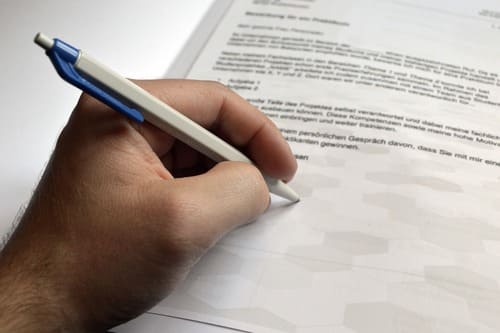The debate about the prowess of left-handed individuals has always sparked discussions. In sports like cricket, soccer, boxing, and tennis, lefties tend to excel due to their opponents’ unfamiliarity with their approach. But are lefties better at golf?
With only around 10% of the global population being left-handed, their impact on most sports remains limited. This uniqueness can give them an advantage, as their style of play catches many opponents off-guard.
In golf, left-handed players constitute merely 5% of the PGA Tour participants. The presence of lefties at the highest level of golf is relatively small.
So, the question arises: “Are lefties better at golf?”
Debunking the Notion: Are Lefties Superior in Golf?
The answer is no. While left-handed athletes might have an edge in interactive sports like boxing, cricket, and tennis due to the element of surprise they bring, this advantage doesn’t extend to golf. Golf is non-interactive, and being left-handed doesn’t provide a strategic advantage as it might in other sports.
The strategies employed by left-handed and right-handed golfers are quite similar. However, there are instances on the course where a lefty might hold an advantage. Certain holes and shots might favor a left-handed golfer’s shot shape, giving them an edge.
Conversely, some left-handed golfers argue that the sport is biased against them. They feel that golf courses are primarily designed for right-handed players. As a result, many lefties choose to switch to playing right-handed to level the playing field. Coaches and professionals often encourage their students to make this switch.
This transition can be a drastic change, particularly for those who have played left-handed their entire lives. Thus, if there’s any group that holds the upper hand in golf, it’s the right-handed players.
The Challenges of Left-Handed Golfers
Given that only around 10% of the population is left-handed, the number of left-handed golfers is naturally lower. Additionally, golf courses tend to favor right-handed players, particularly public facilities. This bias is reflected in the placement of out-of-bounds hazards, which are often located on the left side of the fairway to accommodate the predominant slicing tendency of right-handed players. This means lefties frequently find themselves in challenging situations when their drives veer off course.

Apart from course design, the shortage of left-handed equipment poses another challenge. Mainstream golfers might struggle to find left-handed clubs or gear tailored to their needs. Manufacturers often prioritize right-handed options, leaving lefties with limited choices and potentially lengthy waits for specific products.
Efforts have been made by some manufacturers, prompted in part by influential figures like Phil Mickelson, to offer a wider range of left-handed clubs. One such company, TaylorMade, stands out with a dedicated line of golf clubs exclusively designed for lefties.
Unveiling the Truth About Golf Club Differences
The distinction between right-handed and left-handed golf clubs lies primarily in the symmetry of the club head. The shafts and grips remain the same for both types of clubs. This certainly means a left-handed club head can be easily attached to a shaft of choice.
Performance-wise, there is no significant difference between the two types of clubs. The distance and feel offered by the clubs are consistent. Notable brands providing options for left-handed clubs include Titleist, Srixon, Cobra, and PING.
Win Rate Analysis: Left-Handed Golfers’ Success
To gauge the supremacy of left-handed players, assessing their win rate is crucial. How many U.S. Open tournaments have they won? Have they clinched any major championships or PGA tours?
Here’s the breakdown:
Fourteen left-handed golfers have collectively secured 86 victories on the PGA Tour, with Phil Mickelson accounting for a substantial 45 wins—more than half of the total.
In major championships, lefties like Bob Charles, Mike Weir, Bubba Watson, and Phil Mickelson have achieved success. A list of major championships won by renowned left-handed golfers is provided below:
| Year | Player | Championship | Venue | Score |
|---|---|---|---|---|
| 1963 | Bob Charles | Open Championship | Royal Lytham & St Anne’s | 277 |
| 2003 | Mike Weir | The Masters | Augusta National | 281 |
| 2004 | Phil Mickelson | The Masters | Augusta National | 279 |
| 2005 | Phil Mickelson | US PGA Championship | Baltusrol | 276 |
| 2006 | Phil Mickelson | The Masters | Augusta National | 281 |
| 2010 | Phil Mickelson | The Masters | Augusta National | 272 |
| 2012 | Bubba Watson | The Masters | Augusta National | 278 |
| 2013 | Phil Mickelson | Open Championship | Muirfield | 283 |
This data reinforces the fact that both left-handed and right-handed players have achieved success in major championships and PGA Tour events, dispelling the notion of superiority.
Exploring the Strengths of Left-Handed Individuals
Lefties are often associated with complex reasoning and divergent thinking, backed by studies in the American Journal of Psychology. Notably, many Nobel Prize winners come from the left-handed community, spanning fields like writing, art, mathematics, music, and architecture.

Biologically, the brain lateralization of left-handed individuals differs from that of right-handed ones. Lefties tend to have a more dominant right brain hemisphere, responsible for creativity and imagination. Their creativity is evident from a young age, as they adapt to tools and items designed for right-handed people, demonstrating resourcefulness.
Lefties also possess an advantage in interpreting sounds, processing them more slowly. This heightened sensitivity enables them to pick up subtle nuances in speech and music, contributing to their aptitude for songwriting and artistic pursuits.
Challenges and Strengths of Being Left-Handed
Navigating a world designed for right-handed individuals can be challenging for lefties, leading to more frequent use of their non-dominant hand. This adjustment might trigger increased brain activity in the hemisphere associated with fear.
Lefties may also encounter hostility due to their differences, contributing to potential mental health challenges. Despite these obstacles, left-handed individuals are known for their resilience.
Final Thoughts
Left-handedness is a genetic rarity, with around 10% of the population falling into this category. The reasons behind this prevalence remain speculative, including theories of ancient genetic mutations affecting brain lateralization.
In golf, there is no inherently superior side to choose. While lefties might opt to play right-handed to align with the predominant course design and equipment availability, right-handed individuals need not switch unless they feel comfortable doing so. Ultimately, the skill and determination of the golfer matter more than their handedness.






